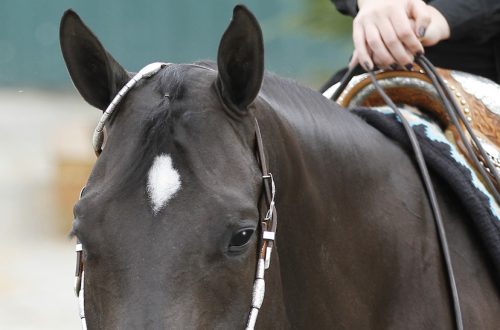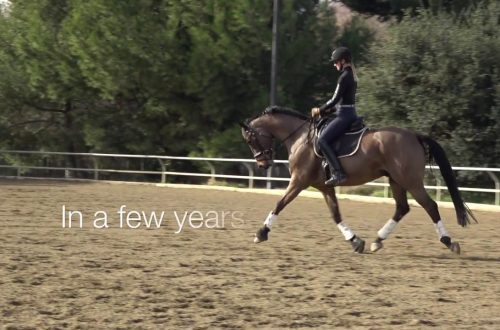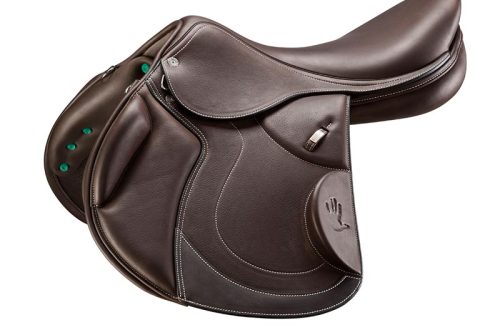
Horse training: be “here” and “now”!
Horse training: be “here” and “now”!
We at Meredith Manor call our method of working with horses “Attention of the horse to the rider” (from the verb to listen – ed.). And our students at the beginning of their training think that their goal is to teach the horse to pay attention to them. But it is not so. They face another task – to learn to turn their (!) Attention to the horse.Attention to the Rider brings horse and trainer together in the one place where any communication or training can take place – in the present moment.
The horse is always “here” and “now” – it is the master of the “current moment”. Her attention is always directed only to what is happening right at this second, in this very place, and what is important is how what is happening affects the feelings of the horse. Everything that is happening now reminds her of something that happened to her before. The horse thinks about whether the encounter with this object was either intimidating or safe and comfortable.
For a horse, “yesterday” is important only in terms of experience gained. And “tomorrow” does not matter at all – she does not need to worry about it. The horse does not think about what he ate for breakfast or what will be on the menu for dinner. She does not think about how what is happening now will affect the future and how it fits into the sequence of events.
People, for their part, are masters of the “process.” They stand next to the horse, but mentally they can be in yesterday, when they did a great job, or in the day before yesterday, which was nowhere worse, or in the day that comes a week later, when the tournament takes place. The rider’s mind takes him back and forth from the present moment, from what the horse is doing now to what he hopes the horse will do next or has done before.
Instead of remaining mentally in the moment they are currently experiencing with the horse, people are carried forward as many steps as they like, drawing for themselves any sequence of them. But then when the horse does something that doesn’t fit that sequence, they call it stupid or stubborn or whatever, when the real problem is that they let their attention wander somewhere else. The moment the failure occurred and the horse took the step that started the “wrong” step sequence, they were far away and missed it.
The first thing any rider needs to learn is to always be with the horse in the present moment, step by step, paying attention to the horse so that the horse pays attention to him. If a person’s attention moves away from a horse, he has no right to blame him for the fact that his attention has switched – to another horse, bird, grass – whatever!
Imagine that you are leading a horse to a stall. A friend comes up to you and offers to go to a nearby cafe for a bite to eat after you finish your horse. You ask the horse to stop, and start discussing the time, place, and whatever else with your buddy. You have already jumped into the future by turning your attention away from the horse. You left the current moment and left the horse in it.
As soon as the horse feels that your attention is no longer with him, he will stop paying his attention to you – lower his head, start chewing grass or hay scattered in the passage, move forward or backward, instead of standing still, as you asked him to. .
When you finally return to the present moment, you will find that the horse is busy with his own business. What is usually done in such situations? Someone will pull the lead, someone will bark, someone will start pulling the horse towards him. Will these actions be logical for her (!)? Why did she get so much “pressure”?
If both the trainer and the horse are thinking about the current moment, they are focusing on the same thing at the same time. Now every little change in the situation makes sense for both. If the horse stuffs his ears, holds his breath, puts his foot a little in or out, the trainer will see this immediately and react in a timely manner. If you respond to a small change in time, you will not have to face the consequences of inattention.
A horse that “listens” to a person will also instantly respond to changes in the position of his body, in speed of movement and even in the length of steps. There will be no need for the extra fuss that accompanies your attempts to get the horse to do something. Just stay on the same wavelength with her.
Let me give you one more example. You are next to the horse on the parade ground or somewhere else. The horse notices an unusual boulder, which brings up not very good memories in his memory. If at this moment you think about the upcoming dinner, then the horse, having portrayed a serious fright, will give you a couple of unpleasant moments.
On the other hand, if you were in the present moment, you would notice some subtle signal that the horse’s attention has shifted from you to the boulder. You would just as subtly switch his attention back by asking the horse for something, rhythmically applying the means you normally use to get his attention. Once the horse “comes back” to you, he will feel safe and comfortable and walk past the boulder without getting nervous.
To control a horse’s body, you must control its mind. To control her mind, you must get her attention. To get a horse’s attention, you have to be with her here and now.
Be consistent in how you show, ask and tell your horse what you want from him and you will be working with a confident horse who trusts you.
Ron Meredith (source); translation by Valeria Smirnova.





